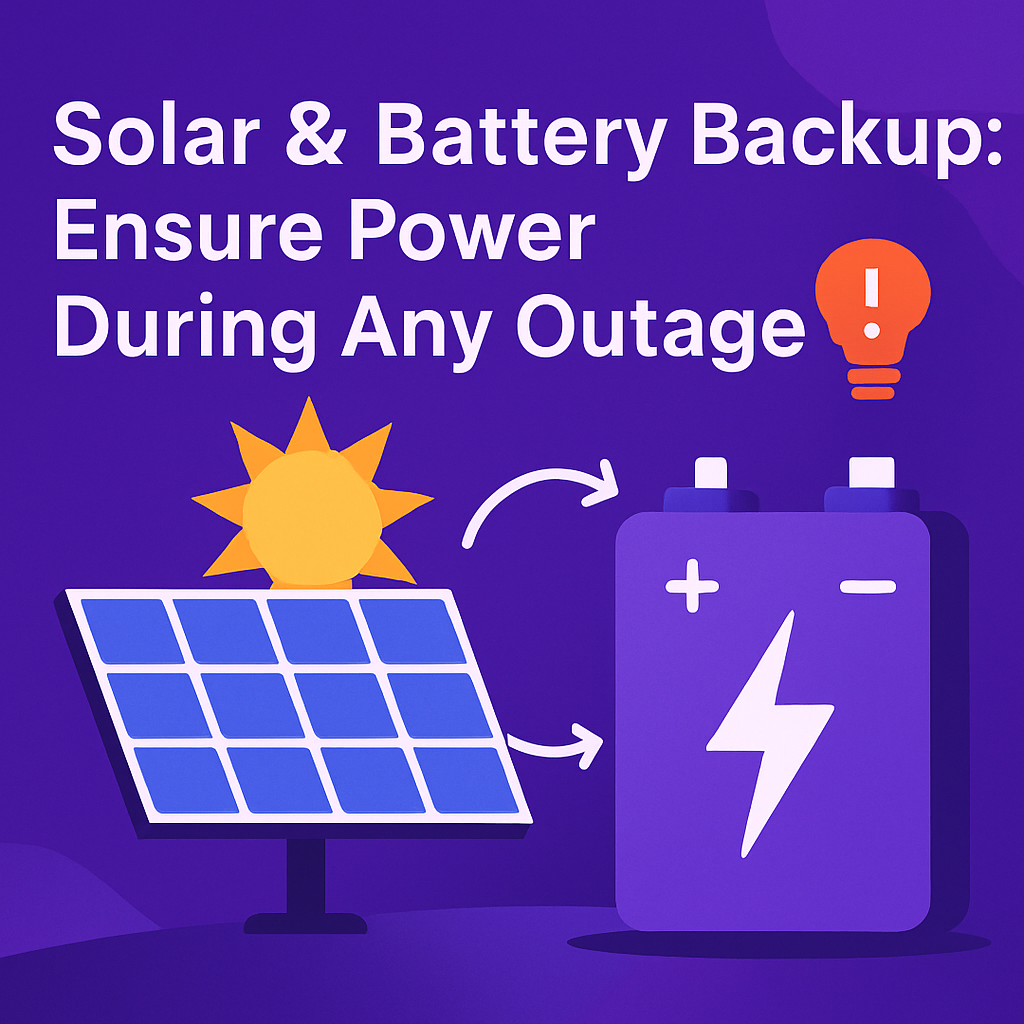Solar & Battery Backup: Ensure Power During Any Outage
In a world where electricity is indispensable, power outages can disrupt our lives and businesses significantly. In Australia, the importance of reliable power cannot be overstated, especially during unexpected outages. Leveraging solar and battery systems not only ensures continuous power supply but also offers numerous financial and environmental benefits.
Understanding Solar & Battery Systems
Solar panels capture sunlight and convert it into electricity, while battery storage systems store this energy for use when the sun isn’t shining. A typical setup involves installing photovoltaic panels on rooftops and integrating a battery system to store surplus power generated during the day.
For instance, a 6.6kW solar system installed in Sydney can produce approximately 9,000kWh of electricity annually. This setup can significantly reduce reliance on the grid and lower electricity bills. When it comes to battery storage, brands like Tesla Powerwall and BYD are popular choices, each offering distinct advantages in terms of capacity, warranty, and cost-effectiveness.
An infographic illustrating a solar + battery setup can effectively demonstrate how these systems work together to provide uninterrupted power.
Financial Benefits of Solar & Battery Systems
Investing in solar and battery systems presents a compelling financial case. The typical return on investment (ROI) and payback period for these systems vary based on location, consumption, and available incentives. A case study of a Queensland household revealed substantial savings, highlighting the financial viability of such installations.
The choice of inverters also impacts the system’s efficiency and savings. For instance, Fronius and Enphase inverters are renowned for their performance and reliability, with each offering unique features suited to different needs. A visual ROI chart showcasing differences across states can help homeowners make informed decisions.
Navigating Australian Solar Policies and Incentives
Australia’s solar policies and incentives play a crucial role in the adoption of renewable energy systems. Key incentives include Small-scale Technology Certificates (STCs), Large-scale Generation Certificates (LGCs), and Feed-in Tariffs (FiTs), which vary across states. For example, the Victorian FiT differs from that in New South Wales, affecting the overall savings for solar system owners.
A case study on the impact of state rebates on ROI demonstrates how these incentives can accelerate the payback period. A table of state-specific incentives provides clarity on the available options for prospective solar adopters.
Choosing the Right System for Your Home
Selecting the right solar system requires consideration of several factors, including system size, budget, and geographic location. An example of system selection in Melbourne highlights the decision-making process, factoring in local climate and energy needs.
When it comes to choosing solar panels, brands like Aiko and SunPower offer varying efficiencies and warranties. A decision-making flowchart can guide homeowners through the selection process, ensuring they choose a system that aligns with their goals and constraints.
Installation and Maintenance
Professional installation is critical to the performance and longevity of solar systems. For example, Hilts’ ASP Level 2 Works ensures that installations meet the highest standards of safety and efficiency. Regular maintenance, including inspections and cleaning, is essential for optimal system performance.
Service options like Battery & Hybrid Systems and General Electrical Services provide ongoing support to maintain system efficiency and address any issues that may arise.
FAQ Section
-
What is the typical lifespan of a solar battery?
Solar batteries typically last between 5 to 15 years, depending on the brand and usage. -
How does a solar battery work during a blackout?
During a blackout, a solar battery provides stored energy to power essential appliances until the grid is restored. -
Are there government rebates for solar batteries in Australia?
Yes, various state and federal rebates are available to subsidize the cost of solar batteries. -
What is the average cost of a solar + battery system?
The cost varies widely but generally ranges from $10,000 to $20,000, depending on system size and components. -
How do I choose between different solar panel brands?
Consider factors such as efficiency, warranty, and cost when selecting solar panels. -
Can I add a battery to my existing solar system?
Yes, most existing solar systems can be retrofitted with a compatible battery storage system.
Conclusion & CTA
Solar and battery systems offer a reliable solution to power outages, providing financial savings and contributing to environmental sustainability. For personalized insights, consider using Hilts’ AI-powered bill analysis, and book a free site assessment to explore how solar can benefit your home. Embrace the future of energy with Hilts and ensure power during any outage.
Explore more about Commercial Solar Projects and Energy Efficiency Upgrades to further enhance your energy solutions.


